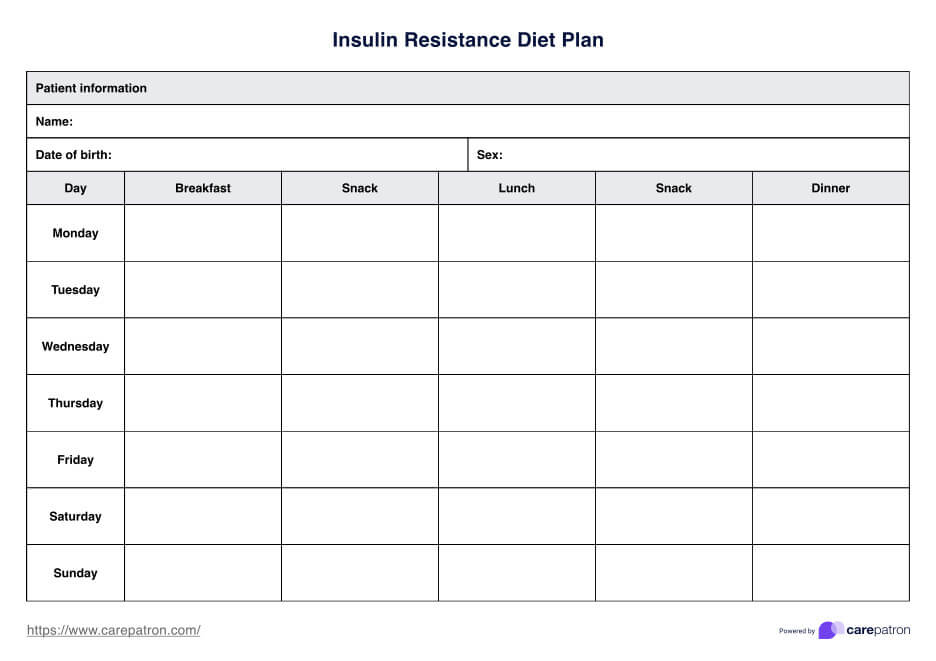Plan meals that balance macronutrients—carbohydrates, proteins, and fats—to support steady blood sugar levels. Including fiber-rich foods and healthy fats can also help slow glucose absorption into your bloodstream.

Insulin Resistance Diet Plan PDF
Support patients with pre-diabetes and insulin resistance using our Insulin Resistance Diet Plan PDF for effective blood sugar management.
Insulin Resistance Diet Plan PDF Template
Commonly asked questions
Eating small, frequent meals or snacks every 3-4 hours can help prevent blood sugar spikes and drops, supporting overall better blood sugar control and management. Avoid processed foods, too. However, individual needs may vary, so listening to your body's signals is essential.
Yes, regular physical activity is an essential part of managing insulin resistance. Exercise can help improve insulin sensitivity, reduce blood sugar levels, and support weight management. Aim for a mix of aerobic, resistance, and flexibility exercises.
EHR and practice management software
Get started for free
*No credit card required
Free
$0/usd
Unlimited clients
Telehealth
1GB of storage
Client portal text
Automated billing and online payments











